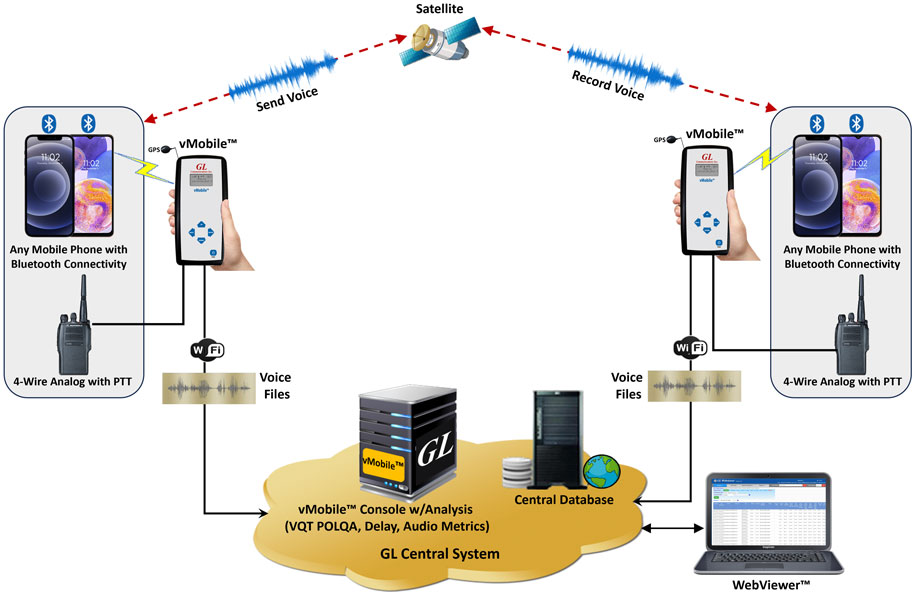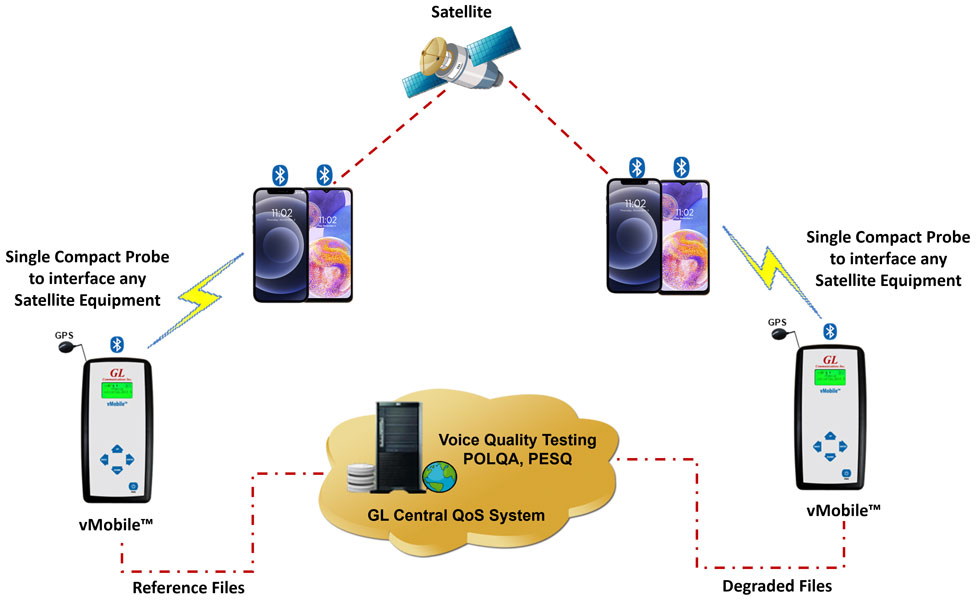Advanced Voice Quality Testing Solutions for Satellite Communications
Welcome to the latest issue of GL's Newsletter, offering insights into our Voice Quality Satellite Testing Solutions. These solutions test the quality of satellite communication networks in terms of user experience. The demand for satellite communication networks continues to grow for both mission critical applications as well as home internet use in rural areas. GL offers advanced tools to interface with satellite networks, generate customizable audio, objectively measure voice quality, and generate reports from an easy-to-use graphical user interface as well as scripting environments.

Overview
Satellite communications networks handle diverse traffic from commercial internet to mission critical communications. Unfortunately, satellite networks are prone to numerous network impairments, such as reduced bandwidth long latency, packet loss and jitter. These impairments affect user experience, especially for voice traffic or other streaming services. Poor voice quality impacts government and military operations as well as private and home internet use.
GL’s test tools are designed specifically to test user experience and can be used to test any communications network. Key metrics include Voice Quality scores (Mean Opinion Score), measuring delay and detecting dropouts. GL’s test equipment interfaces with endpoint communications devices, such as satellite phones and radios. These solutions enable thorough monitoring and analysis of satellite networks.
GL provides test solutions to monitor and test satellite and other backhaul networks, regardless of traffic type. GL offers both portable and rack-mountable equipment. Portable test equipment can be used in rural and remote areas. Rack-mountable equipment can be deployed at ground stations, where signals are converted from wired to wireless and sent into outer space.
GL’s Voice Quality Testing (VQT) Solutions are designed to ensure the clarity and reliability of voice communications in satellite networks. GL’s solutions utilize industry standard algorithms, including POLQA and PESQ. Users can send a wide range of different audio files across the network, mimicking different languages and male and female voices. Different audio will experience different degradation due to the frequency composition of the voice. GL’s solutions ensure that the satellite network is tested for a wide range of audio traffic.

Voice Quality Testing of Radios over Satellite
GL’s tools allow users to send and receive voice and data traffic in real-time over satellite networks using vMobile™. This handheld device can interface to both mobile phones and radios using onboard Bluetooth® and wired connections. The vMobile™ performs call control of the connected device, instructing the phone to place and answer calls, send, and receive audio and disconnect the calls.
The vMobile™ records the audio captured over the satellite network and sends the file to a central database (through an out-of-band network) for voice quality analysis. The central database is called WebViewer™. WebViewer™ includes a web-based dashboard allowing users to access results from anywhere in the world through a standard web browser. If access to an out-of-band network is not available, vMobile™ can store the files locally until the user can upload to the database at a later time.

Voice Quality Testing of Satellite Phones
The figures above depict testing of satellite phones and radios using vMobile™. In both scenarios, the vMobile™ sends and receives audio through the endpoint device and sends the recorded files to the central database for analysis. This solution can work over any satellite network and frequency range by virtue of connecting to the endpoint device. Through scripting, users can run repetitive testing for weeks if needed.
Key Features
- Support for all satellite phone and radio models through Bluetooth® and wired headset connections
- Real-time performance monitoring
- Provides analysis of voice quality, frequency, one-way delay, round-trip delay, P56 analysis, and network dropouts
- Includes portable and rack-mounted equipment for different deployment environments including ground stations and remote locations
- Supports POLQA (per ITU-T P.863) and PESQ (per ITU-T P.862) algorithms
- Results are displayed on Google Maps for location-based analysis and identifying areas of poor voice and data quality
 Back to Newsletter Index Page
Back to Newsletter Index Page